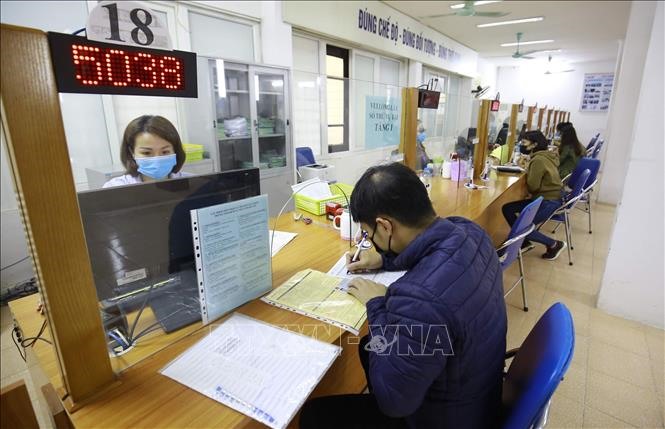 Society
Society

The number of unemployed youths in Việt Nam may double this year, while the employment prospects of 663 million young people in Asia and the Pacific face challenges as a result of COVID-19 pandemic.

|
An unemployed person files for unemployment insurance at Hà Nội Job Centre in March, 2020. — VNA/VNS Photo
HÀ NỘI — The number of unemployed youths in Việt Nam may double this year, while the employment prospects of 663 million young people in Asia and the Pacific face challenges as a result of COVID-19 pandemic.
The figures were revealed in a report entitled 'Tackling the COVID-19 youth employment crisis in Asia and the Pacific' by the International Labour Organisation (ILO) and Asian Development Bank (ADB) which was released on Tuesday.
The report estimated that unemployment among young Vietnamese people was between 10.8 per cent and 13.2 per cent this year, almost double last year’s figure of 6.9 per cent.
If the COVID-19 pandemic is brought under control soon, the number of young people in Việt Nam to lose their jobs will be 370,000, equivalent to an unemployment rate of 10.8 per cent. This could reach 548,000 if it is contained within six months.
Việt Nam’s youth unemployment rate in the first quarter of 2020 was estimated at 7.4 per cent, 0.5 percentage points higher than in the same period last year.
Meanwhile, the unemployment rate of adults in the first quarter of this year remained unchanged at 1.4 per cent compared with last year’s figure.
The sector that saw the largest job loss was the textile industry with 15 per cent, followed by hotels and restaurants, and agriculture with 13.6 and 10.6 per cent, respectively.
A survey from the General Statistics Office released in early July revealed that more than 30.8 million people aged 15 and above have been adversely affected by COVID-19 in the first six months. The service sector hit the hardest, with 72 per cent of people either losing their jobs or having their wages seriously cut.
Labour market disruption
The pandemic has triggered a massive disruption of labour markets and had a disproportionate impact on the employment of young people, said the report.
Youths aged 15-24 will be hit harder than people above the age of 25 in the immediate crisis. They are also more likely than adults to work in less secure, lower-wage jobs usually with limited legal rights and social protection.
Before the pandemic, young people were already facing challenges in labour markets resulting in high unemployment rates and large shares of youth being excluded from both school and work.
In 2019, the regional youth unemployment rate was 13.8 per cent compared to 3 per cent for adults, and more than 160 million youths were not in employment, education or training.
Four in five young workers in the region were engaged in informal employment, a higher share than among adults.
“The pre-crisis challenges for youth are now amplified since COVID-19 hit. Without sufficient attention, out fear is that this risks creating a ‘lockdown generation’ that could feel the weight of this crisis for many years to come,” said Sara Elder, a lead author of the report and head of the ILO Regional Economic and Social Analysis unit.
Youth unemployment rates in the region increased sharply in the first quarter of 2020 from the last quarter of 2019. Compared to the first quarter of 2019, the youth unemployment rate increased in six of the nine economies with available data, including Australia, Indonesia, Japan, Malaysia, and Việt Nam, as well as in Hong Kong (China), which showed the largest increase of three percentage points.
According to the report, job losses among youths will continue throughout 2020 and between 10 and 15 million youth jobs may be lost across 13 Asia-Pacific countries.
One of the reasons young people in the region face greater unemployment risks and employment disruption than adults is that nearly half of them (more than 100 million) are employed in the four sectors hardest hit by the crisis: the wholesale and retail trade and repair; manufacturing; rental and business services; and accommodation and food services, said the report.
To minimise future “scarring” of more than 660 million young people in the region, the governments are called upon to adopt urgent, large-scale and targeted measures to generate jobs for youth, keep education and training on track.
The report recommended support measures, many of which should be directed at enterprises in the hardest-hit sectors where job losses are concentrated, to be prioritised include providing youth-targeted wage subsidies and public employment programmes and expanding job information and employment services targeted to young jobseekers. — VNS




